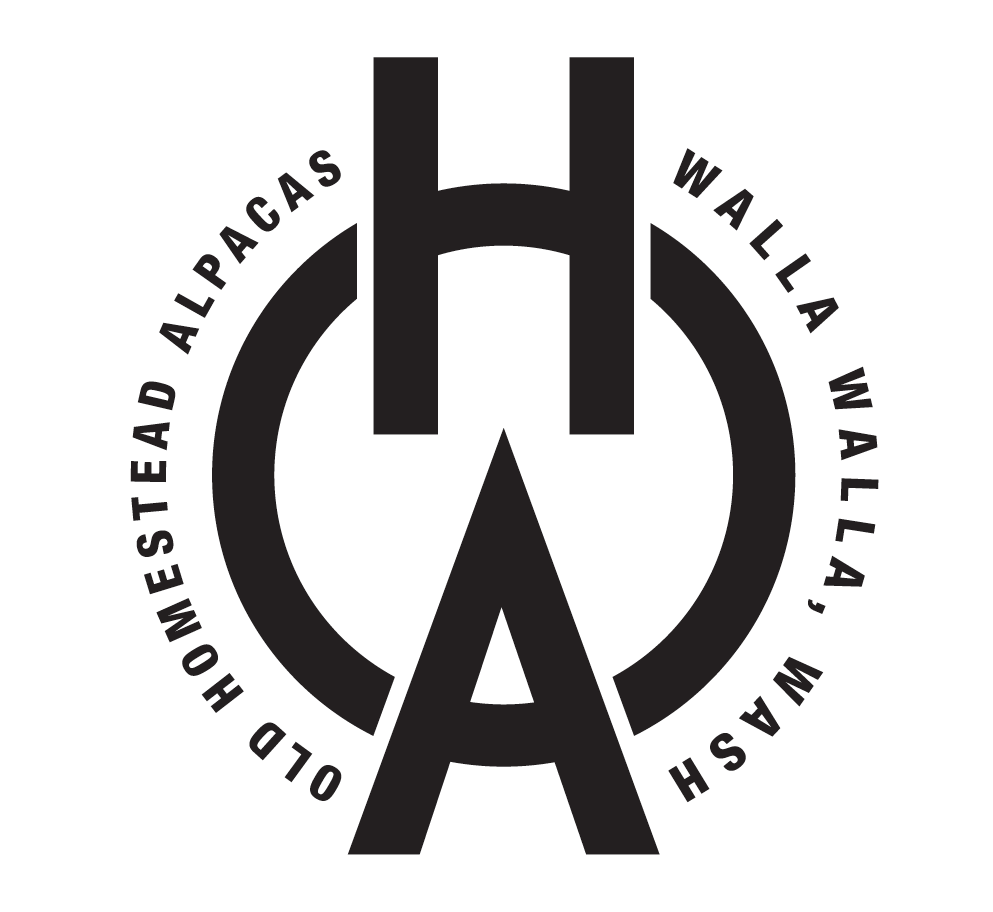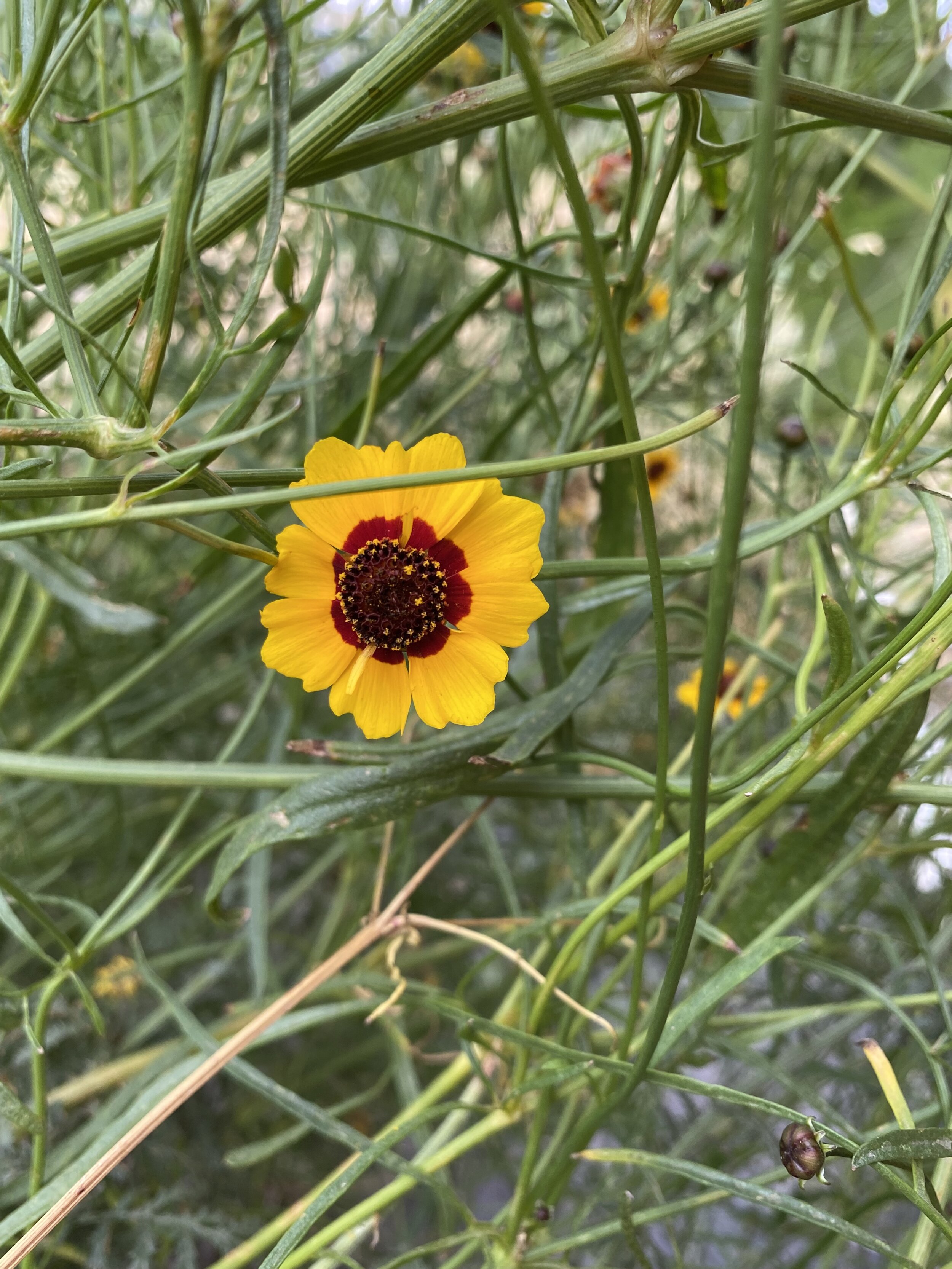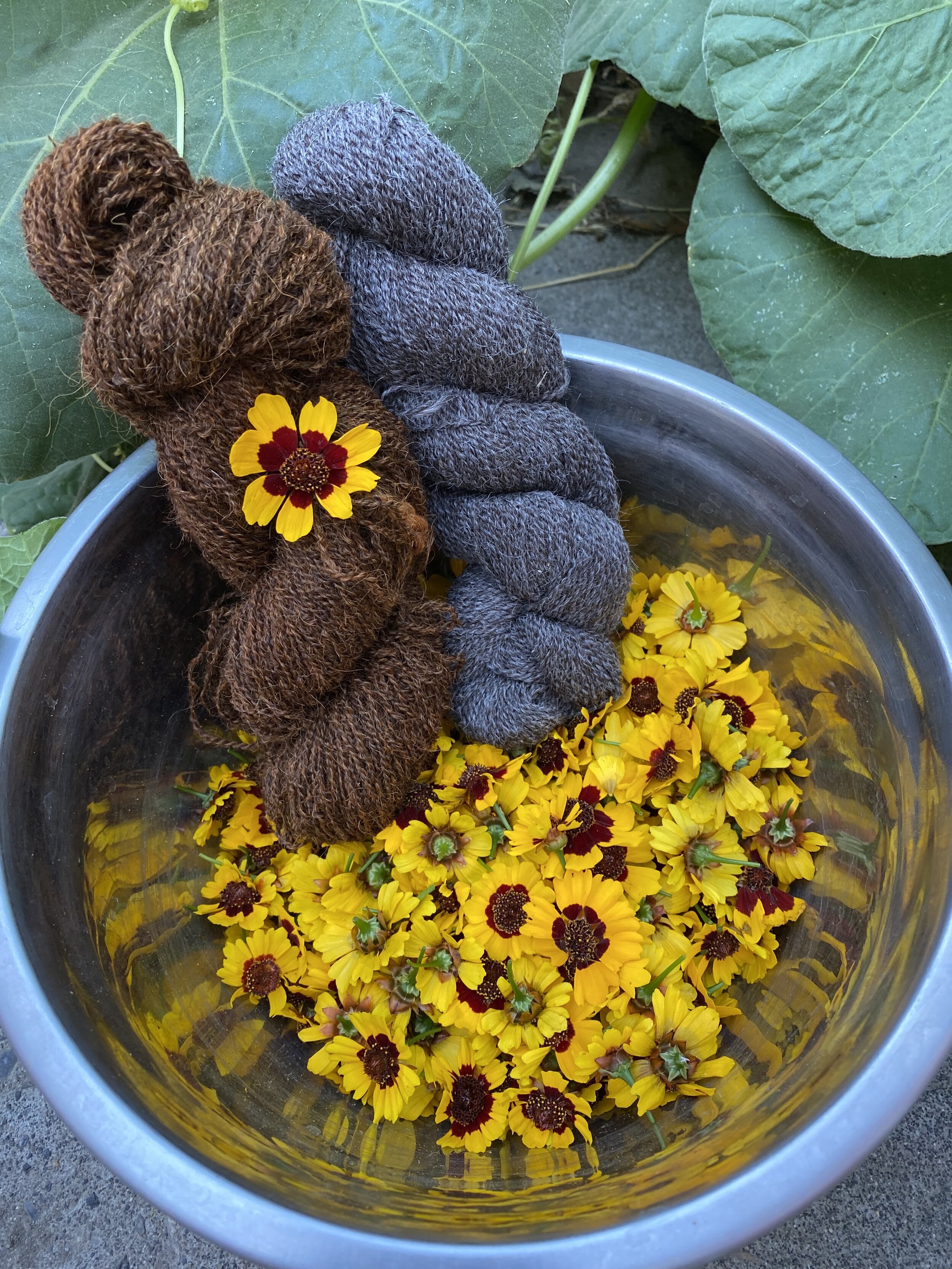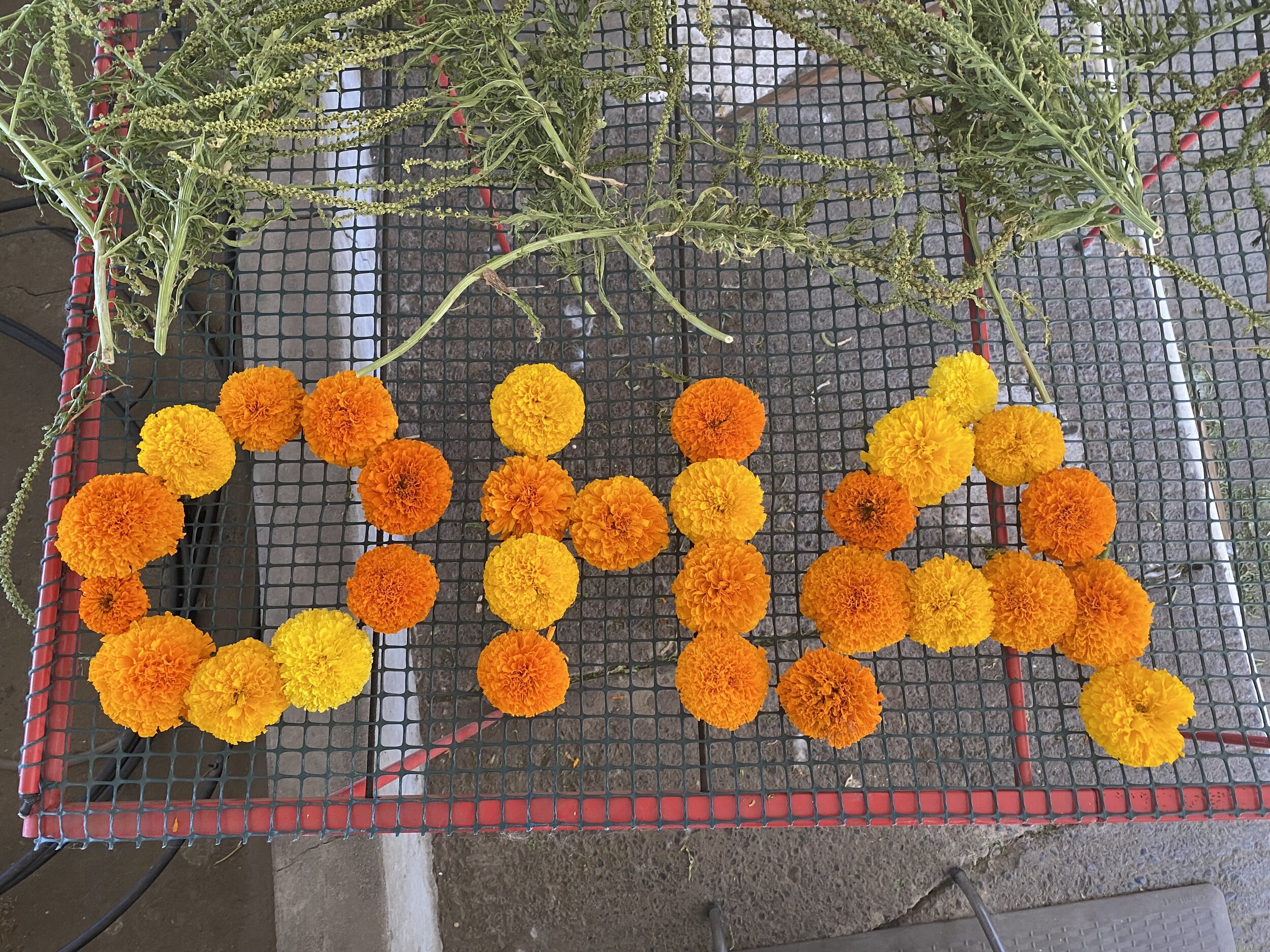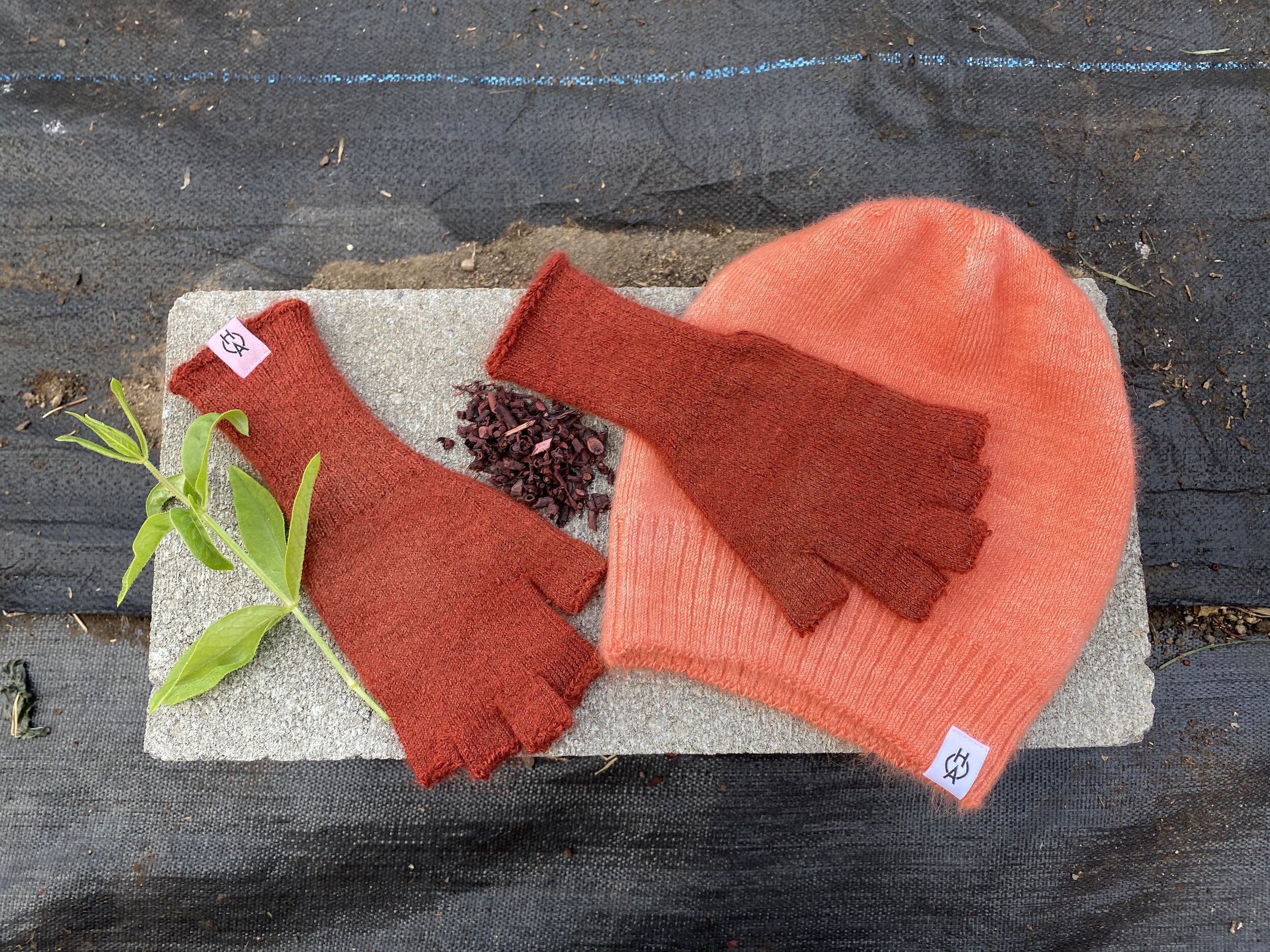Growing Color
The second best thing to growing our own fiber — is growing our own color.
What is growing color, you ask? That means we grow our own natural dyes!
For millennia our ancestors have been using natural elements to bring color to food, textiles, the body, you name it. From roots to flowers, to seeds, to trees, naturally occurring pigments are a part of the fabric of this planet.
Discovering the natural dyeing process back in 2014, I’ve been inspired and captivated ever since. And when I learned that I could grow several dye-bearing plants right here on the farm … ? Well, that simply took my personal and professional life into a whole new dimension.
Suffice it to say, I’m a fan - and hopefully you’ll be, too!
Just outside the dye house was the perfect little scrap of unused space. It’s about 35 feet long by 15 feet wide and has the ideal sun exposure to be home to the dye garden!
Every spring, I take heaping shovels full of the alpaca’s manure and incorporate it into the beds, before sprinkling little seeds everywhere.
Or as in the case of these bright orange cosmos, they self seed and sprout all on their own!
May through September, I’m able to use the flowers for dye when they’re freshly picked.
I like to pick them in the early morning when it’s cool and enjoyable — and before the pollinators wake up.
It’s a lovely morning ritual, especially with a hot cup of coffee.
Cosmos grow effortlessly, with multiple buds per stem. The more you pick, the more they bloom!
Using a low, slow heat, cosmos steeped in water make the clearest, cheeriest orange of all time. Even non-orange lovers agree.
Coreopsis is another dye garden favorite. She’s a dainty flower that many folks recognize since it grows wild across most of the US.
She readily self seeds year after year. I’m able to get the most insane shades of coppery-burgundy from her.
With both cosmos and coreopsis, I use them fresh when I can and freeze them when I can’t!
Marigold is probably my all-time favorite dye plant because it is such a versatile workhorse! Not only is it great for attracting beneficial insects while repelling pests, the classic bronzed yellow it produces is unmatched.
Not to mention, a little goes a long way and when it cranks out palm-sized blooms, I don’t have to grow but one or two plants! And since there’s always a bit of color leftover in the kettle after a marigold dye session, I like to bottle it to spray on the alpacas as a natural fly & insect repellant.
Due their bulkiness and the fact they preserve well when dried, I spread them out on the fiber skirting table to dry. I harvest them all summer long, clear up until it frosts. I’ll usually fill the table at least twice before bagging them up.
Marigold are very fragrant, too! So laying them out like this is akin to enjoying fresh potpourri.
Steeping marigold is an instant mood boost & pick-me-up at any time of the year, but especially in winter. There’s nothing like steamy marigold wafting through the dye house on a snowy day to instantly transport you to warm summer sunshine!
Another must-grow dye plant I use is weld - or - dyer’s rocket. In some areas it’s an invasive weed. And no wonder, it’s tall pointy spires are encased in tens of thousands of itty bitty seeds.
I’ve never have to replant this one because I harvest for dye when the seed heads are full — so it self seeds like mad.
And weld is a productive as it is prolific. The pigment yields everything from a soft, pale buttercream to neon yellow.
I dye with weld first to get yellow, and then when I’m shooting to get a grass green…
A few other notable dye plants are —
Dyer’s chamomile for a pastel yellow and the most divine smelling dye house!
Madder root - who takes a minimum of 3 years to grow sufficient pigment - but wows with crimsons and corals!
Hopi sunflower whose ripened seeds bestow purple hues and lavender tones.
With the help of nature, I’m able to take this…
…to make this…
and this…
Pretty cool, right?
Natural fibers with natural colors. All grown on my farm. It doesn’t get much better than that!
If you come to one of our 2 seasonal farm tours this year, you’ll get to see the dye garden and dye studio for yourself.
Want to learn more about our natural dye garden and this year’s farm tours? Join the email list - we offer tickets to these limited capacity events to our email subscribers first.
